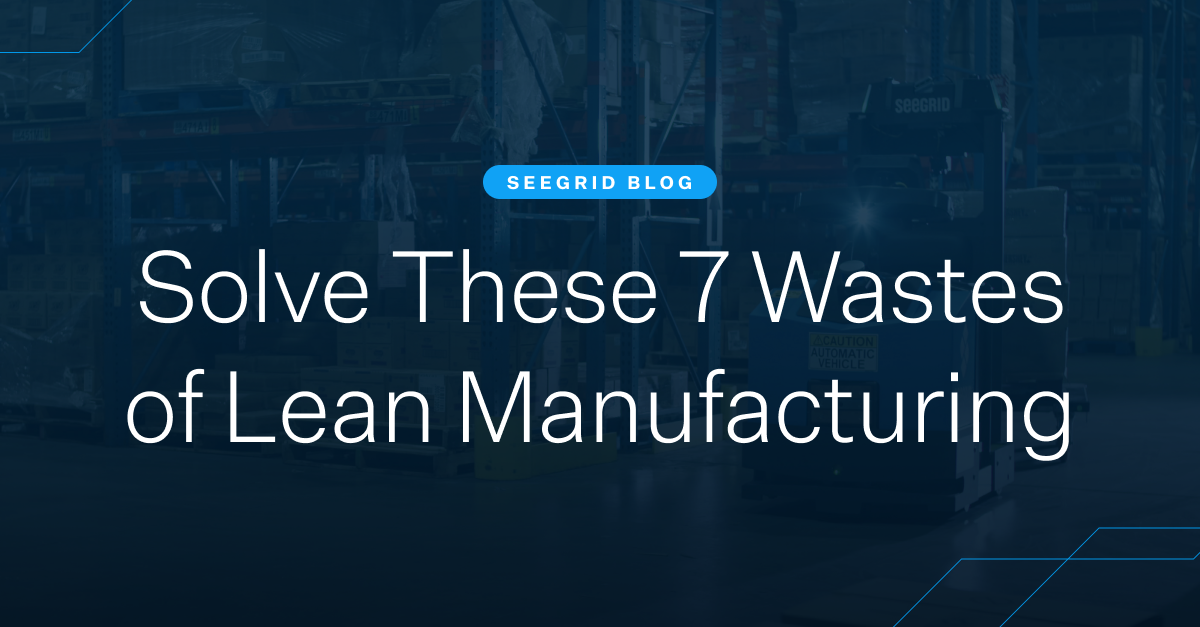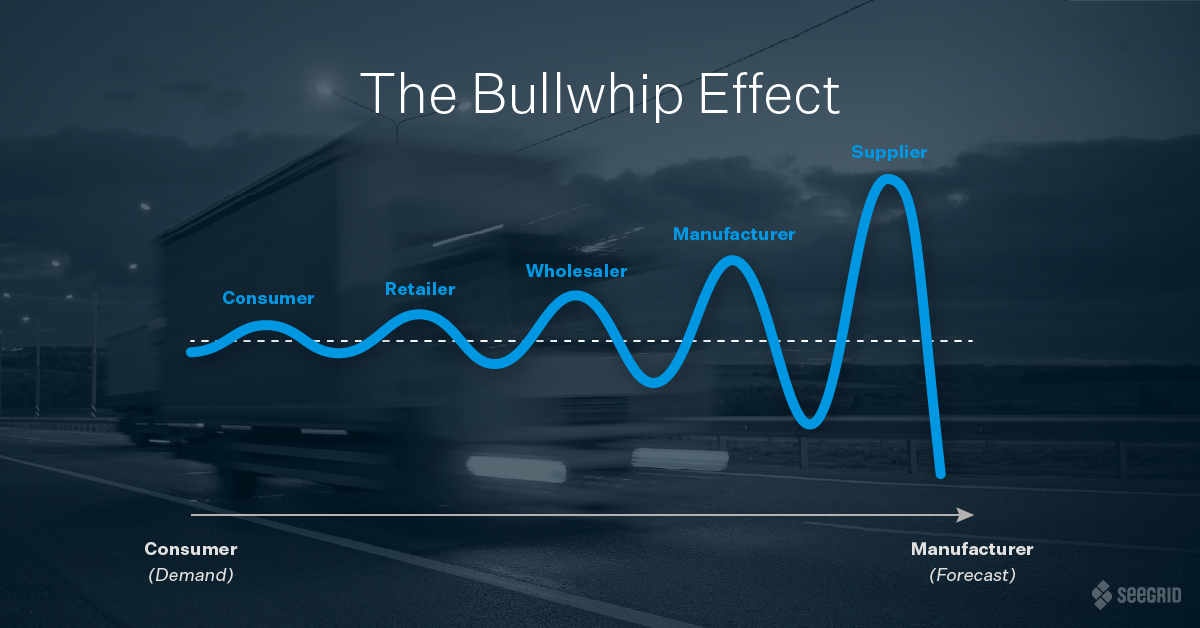Now, more than ever, manufacturers must find ways to operate more efficiently and meet consumers’ growing demands. Facilities are dealing with heightened demand levels while providing a seamless, accurate, and on-time experience for customers.
Material handling facilities are investing in automation, like autonomous mobile robots (AMRs), as a dependable, flexible, and reliable solution for the transport and handling of goods. Automation touches multiple facets within manufacturing and distribution networks and can greatly address areas of waste. In this context, waste can be defined as any task or process that provides little to no added value to the product or user experience.
Here’s how automation delivers greater optimization and reduces the 7 wastes of lean manufacturing and distribution.
1. Transport
Transportation of materials, in and of itself, is a necessary step in delivering goods to a consumer, but the excessive movement of materials can quickly become expensive and does not add any value to the customer. Autonomous mobile robots eliminate the need for people to handle the movement of materials from one location to another.
AMRs eliminate the human cost, errors, and product damage, assuring facility managers that the transportation process is running efficiently. The traditional lean manufacturing approach to reducing transport waste has been to move tasks closer together. AMRs address the costs of transport directly without the need to reconfigure facilities.
2. Inventory
Excess inventory has long been used to cover up inefficiencies, inflexibility, poor responsiveness, and inaccuracies caused by manual processes in manufacturing, the supply chain, and distribution. Many facilities will overstock in order to meet unexpected changes. Instead of pivoting quickly to meet demand fluctuations, a backlog of inventory can be drawn upon. In the end, the excess inventory doesn’t benefit the customer, because it adds wasted capital, storage, movement, and maintenance of the excess product. With increased accuracy through automation solutions, less safety stock is needed on hand, and you have a better understanding of your inventory.
AMRs are an incredibly flexible and scalable solution to fulfill day-to-day flow and unexpected peaks and valleys in demand. Mobile robots allow facilities to achieve a seamless flow within various processes and enable the consistent delivery of goods, delivering the right parts to the right place at the right time—without getting tired or distracted. When materials are picked up and dropped off consistently, manufacturing processes are standardized, which keeps inventory levels low. This allows for just-in-time (JIT) operations to run around the clock, maximizing production while minimizing work in progress (WIP) inventory. Consistency equals efficiency.
3. Motion
Unnecessary movement not only leads to inefficiencies, but unregulated traffic can be a safety risk. Warehouse and manufacturing floors are busy and full of hazards. Manually operated vehicles don’t always stick to the same route, so any unexpected deviations could result in an accident. Not only is the safety of employees at stake, but the resulting damage and downtime from an accident can bring production to a halt. AMRs are consistent, reliable, and predictable - Seegrid Palion AMRs have traveled millions of miles. AMRs can be depended upon to always follow the speed limit and intended routes and to avoid collisions.
To prevent the excessive movement of people or machines within the workspace or work cells, AMRs deliver goods on time, every time. This allows for optimization of the workspace, eliminating unnecessary movement when handling materials. When movement is optimized, the workplace becomes safer and other processes can be reliably performed.
4. Waiting
Waiting is one of the easiest wastes an automated solution can solve. Waiting occurs when the timing of dependent processes don't quite line up. The resulting bottleneck slows production and leaves facilities with non-utilized talent. It may not seem like a long time, but when you assign a dollar value to the lost minutes of productivity, it highlights the need for constant movement.
AMRs eliminate waiting waste because they can be carefully scheduled down to the minute to ensure the continuous flow of materials and traffic. AMRs are predictable and deliver goods on time, every time. Additionally, an AMR fleet analytics tool, like Fleet Geek, part of the Seegrid Fleet Central software platform, shares up-to-the-minute data, creating added visibility into workflows and statistics to reduce waiting and wasted time. Compiling data allows operations managers to detect patterns that may point to discrepancies, giving them the chance to modify processes to increase efficiency.
5. Over-Processing
Non-standardized working practices caused by human operators using different methods between different shifts can result in over-processing or over-handling. AMRs enable consistency within facilities and ensure that the best and most efficient practices are being followed.
6. Overproduction
AMRs reinforce consistent JIT delivery, allowing companies to schedule and produce only what can be immediately sold and shipped. By eliminating human error, AMRs ensure that all processes are completed according to production schedules. Predictable behavior by the AMRs reduces the need to create buffer inventory to compensate for shift surge, employee break time, and other inconsistencies.
7. Defects
Improper handling techniques can result in damage to products, materials, and goods. Driving and stopping too quickly, colliding with obstacles, racing over rough floors, and cutting corners all impart shock loads to the goods being transported, causing damage. AMRs always drive with consistent speed and acceleration, following well-defined routes that avoid damaging the products being transported. This results in higher production yields and fewer losses in the distribution steps, reducing waste and satisfying customers.
Next Stop: Industry 4.0
Lean manufacturing is an attainable goal for the companies that are taking the steps needed to embrace Industry 4.0. While there are still many businesses that are reluctant to make a change, there are substantial benefits of implementing connected material handling technology like AMRs.
The implementation of automation to solve the 7 wastes of lean production doesn’t signify an end to the role of the human workers. Instead, it sparks new opportunities for workers who perform dangerous and often mundane tasks. Automation also eliminates factors such as human error, defective product incidents, and production downtime, which paves the way for continuous improvement in safety, productivity, and a seamless manufacturing process for a streamlined supply chain.
Infographic: Driving Down Costs with Automation
Download this infographic to learn about the costs associated with manual material handling and how automation can help you increase productivity, reduce costs, and create safer work environments.







